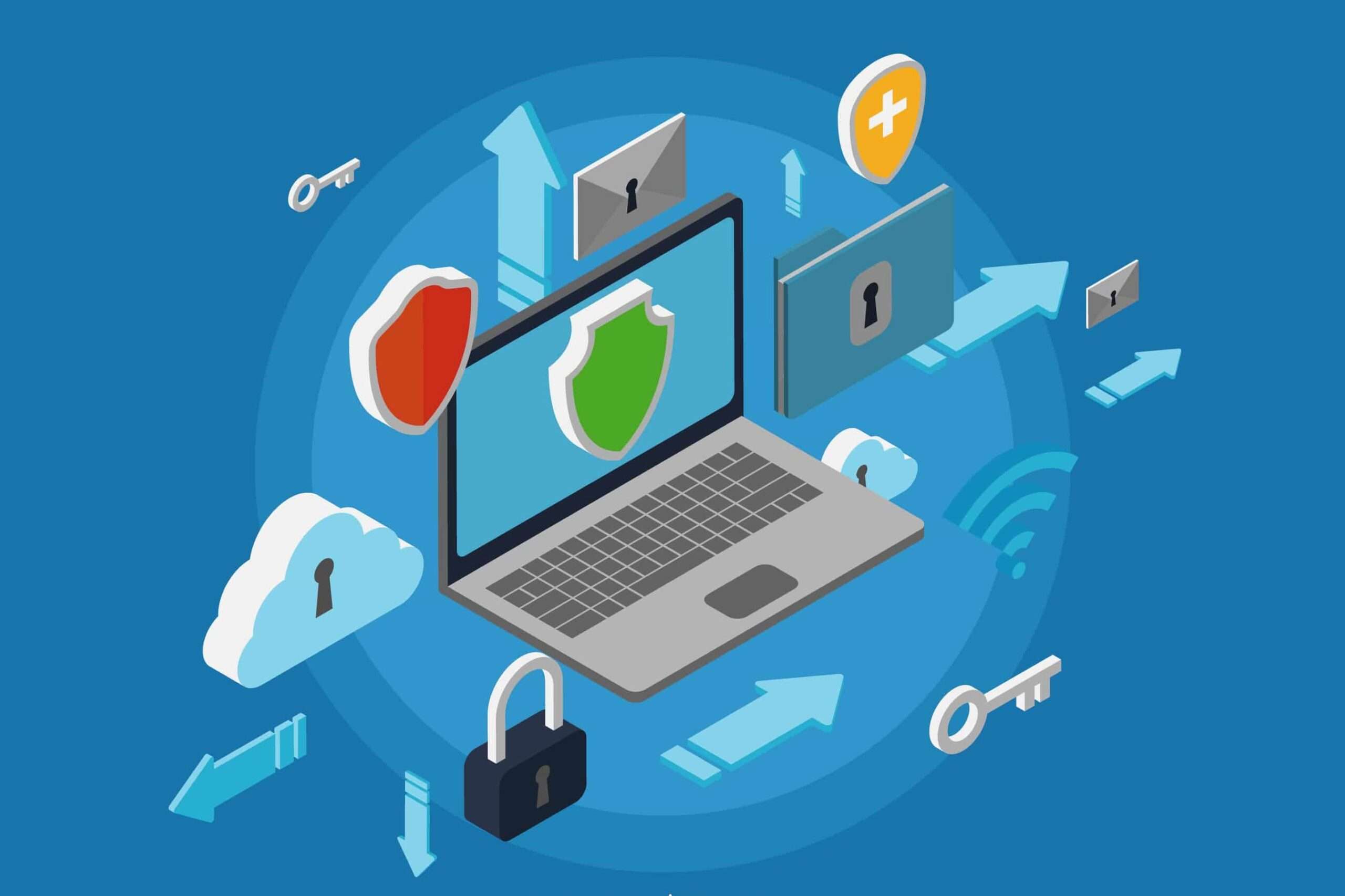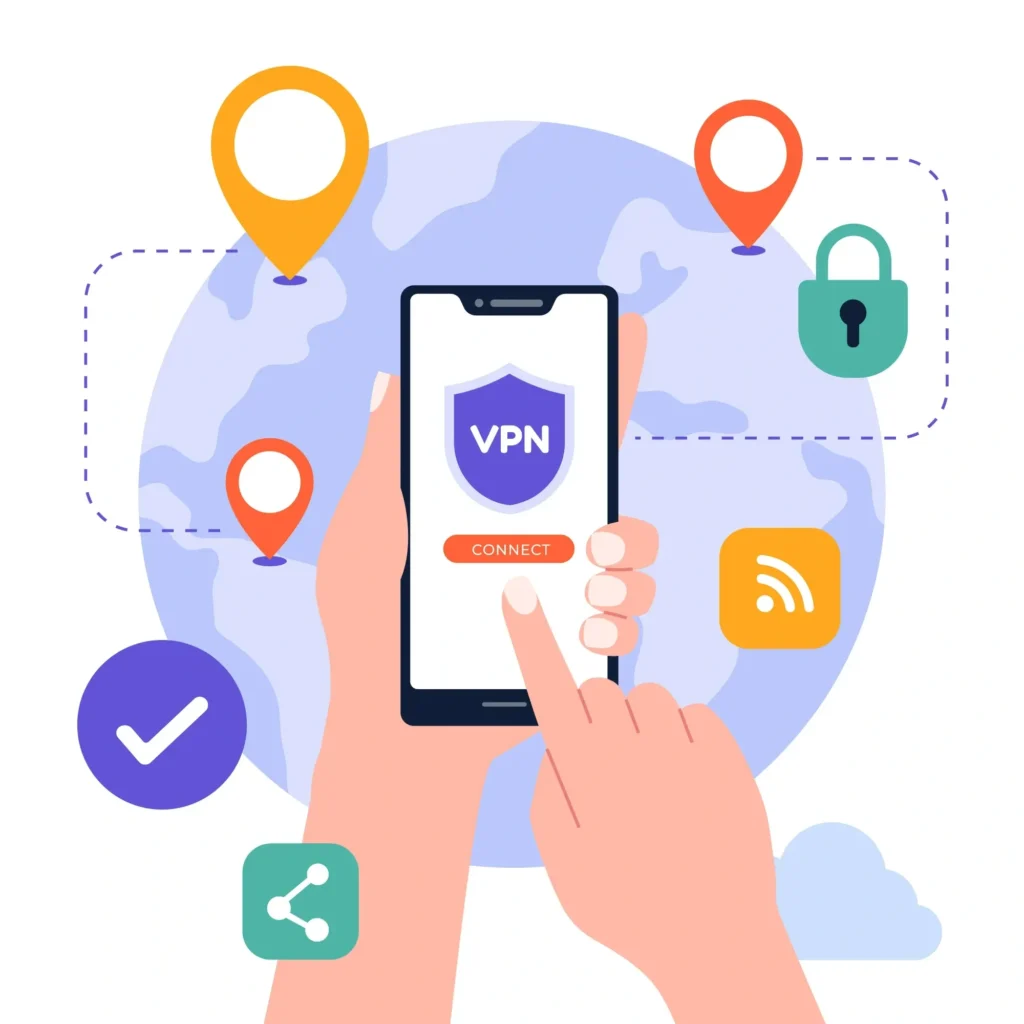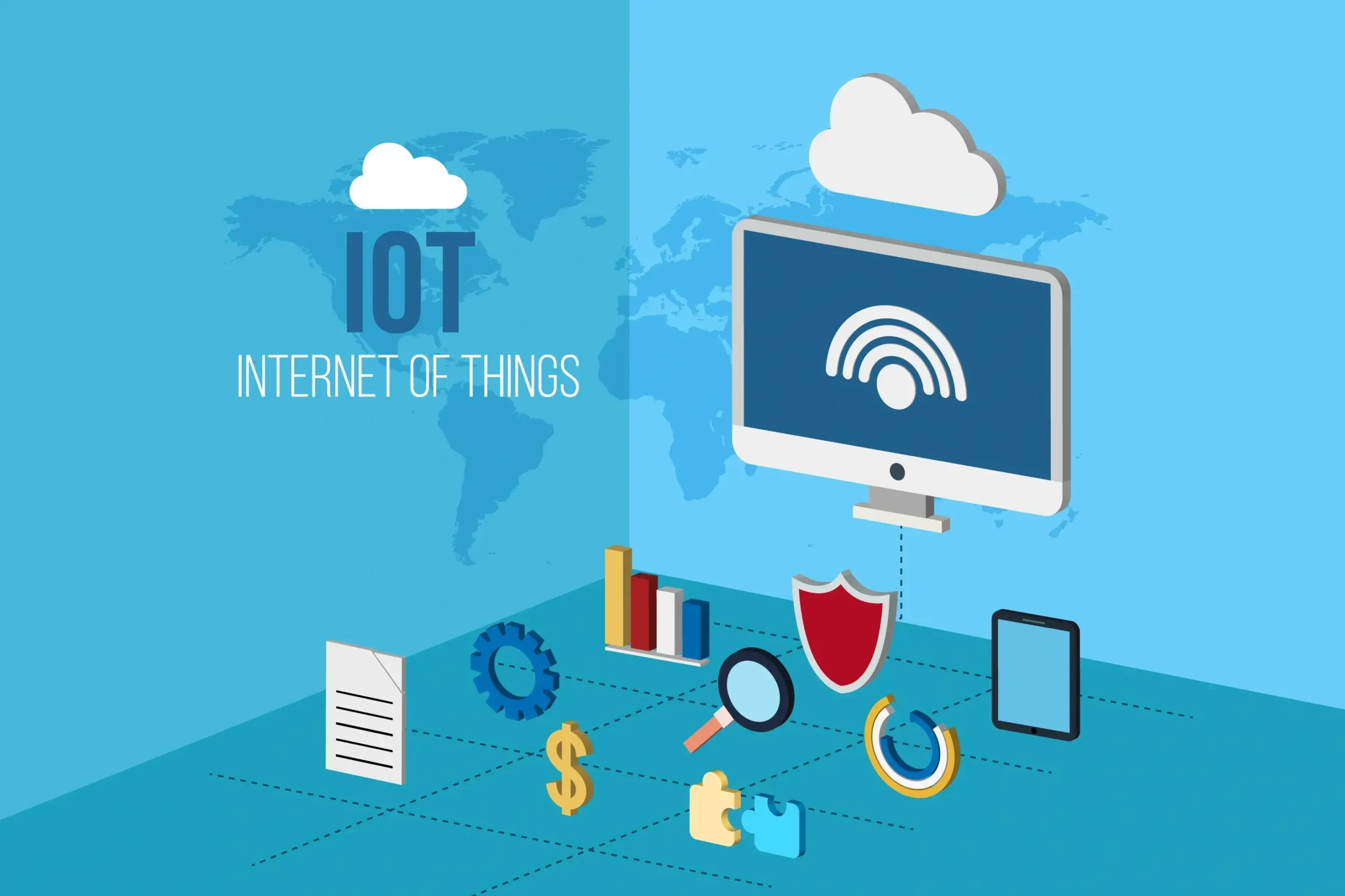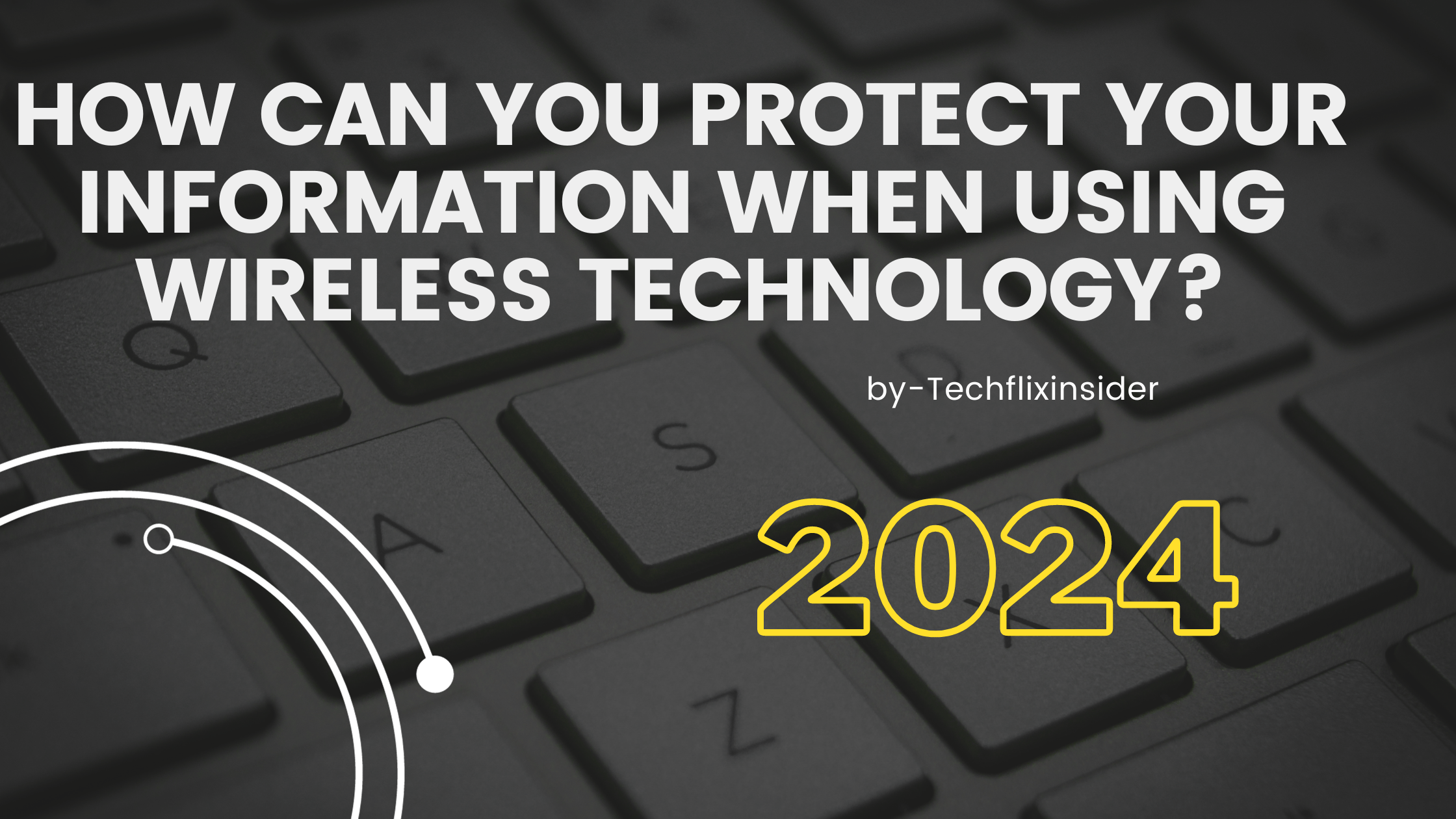Hey, reader in this constantly evolving digital era are you also having the same question that many people like you are searching for, well you don’t have to worry about it we are going to answer this question by giving you all the details about privacy and how can you protect your information when using wireless technology? in 2024. Read this complete article to know exactly what to do and what measures you should take to protect yourself from cyber-attacks.

How can you protect your information when using wireless technology?
You can protect your information when using wireless technology by using strong encryption methods like end-to-end encryption. Identify the value of your data and the potential risks. Implement secure practices like using unique and strong passwords, updating devices when new updates launch, using public Wi-Fi safely, and many other precautions.
All these threats and safety measures are going to be covered in this article.
Introduction
1. The pervasion of Wireless Technology
In this new digital era wireless technology has completely changed the way of communicating with one another. From Wifi networks to Bluetooth-enabled devices the easy access we get by wireless communication is very satisfactory. However, this satisfaction sometimes brings its own challenges when it comes to safeguarding sensitive information.
2. The Growing Threat to Information Security
As the dependency on wireless technology is increasing day by day it’s becoming more risky to handle sensitive information securely. Some evil people try to compromise data integrity and confidentiality by using complex methods to find the weak points in wireless networks. Thus understanding these threats can safeguard your sensitive information and digital assets.
Understanding the Wireless Networks
1. Type of Wireless Networks
A. Wi-Fi:
Wi-Fi, or Wireless Fidelity, is a technology that enables one to communicate wirelessly within a local area network. It is widely used for internet access in homes, businesses, and public spaces.
B. Bluetooth:
Bluetooth technology offers short-range wireless communication between devices, such as smartphones, laptops, and peripherals. It is commonly used for file sharing, audio streaming, and connecting various gadgets seamlessly.
C. Cellular Networks:
Cellular networks, powered by mobile infrastructure, allow devices to connect wirelessly over long distances. These networks form the backbone of mobile communication and offer mobile communication, enabling voice calls, text messaging, and internet access on mobile devices.
2. Vulnerabilities in Wireless Communication
Despite their convenience, wireless networks still have chances to various weak points that can be broken by evil elements.
Threat Landscapes

1. Cyber Attacks on Wireless Networks
- Interception(Eavesdropping): Attackers can intercept and keep their eye on wireless transmissions, leading to unwanted access to sensitive information.
- Man-in-the-Middle Attacks: Hackers can position themselves between an ongoing transmission who are communicating, intercepting, and then potentially having access to data being transmitted without detection.
- Spoofing: Attackers may try to show their devices as other devices but they are not, which can lead users to connect wrong and malicious devices that can steal your data.
Understanding these weak points is crucial for setting up effective security measures to reduce the risk and make yourself safe.
2. Common Hacking Techniques
- Phishing: Phishing is an illusionary technique where attackers use fraudulent emails, messages, or websites to fool people lead to disclosing their private and important information such as passwords, and bank details. Phishing can be used to gain access to network credentials in the context of wireless networks.
- Packet Sniffing: Packet Sniffing involves capturing and analyzing data packets as they travel across a network. Attackers use Packet Sniffing to intercept unencrypted data leading to having access to sensitive information from the packets, such as login details or personal details.
- Brute Force Attacks: Brute Force attacks involve methodically attempting every possible combination of encryption keys or passwords until the right one is discovered. Brute force attacks on weak or basic passwords allow attackers to get access to login credentials and passwords on wireless networks.
Assessing Your Information Assets
1. Identifying Sensitive Information
Identifying sensitive information involves recognizing and categorizing data that, if compromised, could lead to significant harm or loss. This includes personally identifiable information (PII), financial information, intellectual property, and any other data that, if accessed by unauthorized parties, could result in privacy breaches or financial consequences.
2. Understanding the Value of Your Data
Understanding the value of data can be very sensitive to know its worth. It involves assessing the criticality and importance of different types of information to your organization or personal well-being. This analysis takes into account elements like
- Business Impact: It can impact your business if specific data is compromised.
- Legal and Regulatory Compliance: Ensuring that handling and protection of certain data comply with relevant laws and regulations.
- Reputation Risk: Reconignig that a data breach can have a long-lasting impact on someone’s reputation.
By paying attention to the value of data an individual and organization can prioritize their security efforts, focusing on protecting the most critical and sensitive information effectively. This includes the implementation of steps and the measures taken to stop and data breach and protect your data from any threat.
Why is Encryption essential?

1. Importance of encryption:
Encryption is like putting your information in a secret code that only you and those you trust can open. Imagine sending a letter in a locked box-even if someone intercepts it, they can’t make sense of the contents. Encryption is important because it ensures that even if someone manages to access your data, it’s useless to them without the “key ” to decode it.
2. End-to-end Encryption:
End-to-end encryption is like having a private conversation in a soundproof room. It means that only the minted sender and receiver can understand the information being shared. Nobody in between can understand the data without a key.
3. Encryption protocols in Wireless Technology:
Consider encryption protocols as the rules and languages that devices use for safe communication. In wireless technology data is transmitted between devices using certain protocols. It ensures that even if someone accesses the conversation by intercepting it, they won’t be able to understand it without the right key.
Secure Connection Practices
1. Password Management:
To protect your accounts use strong passwords, avoid personal information, use a password manager, update passwords in regular intervals of 3-6 months, and avoid using the same passwords for multiple accounts.
2. Two-Factor Authentication:
It is like an extra layer on your security by enabling two-factor authentication (2FA) whenever possible it involves filling in of password and then sharing a code to your phone or generated by an app if both processes are done then only you can log in.
3. VPNs for Added Security:
Using a Virtual private network can increase your security and privacy, it encrypts your internet traffic, protecting your data from being intercepted by an attacker.
Securing Your Wi-Fi Network

1. Strong Passwords and Network Names
Set a unique and strong password that is difficult to guess and for more protection change your default network name this could make it more difficult for the attackers to identify your network.
2. MAC Address Filtering
By enabling MAC Address Filtering you can control which devices can connect to your network.
3. Regularly Update Router Firmware
By regularly updating the Router’s firmware helps to patch security vulnerabilities.
Public Wi-fi Awareness

1. Risks of Public Wi-Fi
Before using any public free wi-fi you should be cautious as public wi-fi networks are often not secure.
2. Using Virtual Private Networks (VPNs) in public Spaces
You can use a VPN for using public Wi-Fi this will encrypt your traffic and protect your data.
3. Avoiding Sensitive Transactions on Public Networks
You should avoid any sensitive transactions on public Wi-Fi for anything such as Online banking, shopping, or accessing sensitive information.
Best Practices for Mobile Devices

1. Securing Smartphones and Tablets
You should use passcodes or pattern locks to protect your devices and in case you lost your device or it got stolen before that enable remote wipe features.
2. Location Services and Privacy Settings
Always be smart when dealing with location services and privacy settings on a mobile device. Also, adjust settings, which app can access your location and other personal information.
3. App permissions and Access Controls
You should review the app permissions before allowing them to have access to unnecessary permissions and keep checking for updates regarding app permissions.
IoT Security Measures

1. Securing Connected Devices:
- Change default passwords: Many IoT devices come with weak default passwords. Change them to strong, unique passwords immediately.
- Update firmware regularly: Manufacturers regularly release firmware updates to patch vulnerabilities. Update your devices as soon as updates are available.
- Disable remote access if not needed: Some devices allow remote access for troubleshooting you should disable this feature if you don’t need it to protect yourself from any unauthorized access.
- Separate your networks: You should create a separate network for your IoT devices to keep them isolated from other devices on your network.
- Use strong encryption: For secure communication, you should choose devices that use strong encryption protocols like WPA2 or WPA3.
2. Managing IoT Device Permissions:
- Review app permissions: You should review the app permissions you give to apps used to control your IoT devices thus giving access to only the necessary data.
- Disable unused features: Turn off features you don’t use to reduce the potential attack surface.
- Regularly check device activity: Monitor your devices for unusual activity that could indicate a security breach.
3. Regularly Checking for Firmware Updates:
- Turn on automatic updates: Many devices have options for automatic updating of apps you should turn it on to ensure your devices stay protected.
- Subscribe to manufacture notifications: Sign up for email or notifications from your device manufacturers to stay informed about any problems and available updates.
Legal and Compliance Aspects
1. Data Protection Laws:
- GDPR (General Data Protection Regulation): For the organizations that process the personal data of EU residents. Requires implementing appropriate security measures to protect personal data.
- CCPA (California Consumer Privacy Act): Give rights to California residents regarding their personal data, including the right to access, delete, and opt-out of the sale of their data.
- Other regional privacy laws: Different regions have their own data protection laws with varying requirements. Familiarise yourself with the laws applicable to your location and target audience.
2. Compliance Requirements for Wireless Networks:
- HIPAA (Health Insurance Portability and Accountability Act): Protects individually identifiable health information. If your wireless network is used for healthcare purposes, you must comply with HIPAA regulations.
- PCI DSS (Payment Card Industry Data Security Standard): Sets security standards for organizations that store, process, or transmit payment card data. If your wireless network processes payment card data, you must comply with PCI DSS.
- Other industry regulations: Different industries may have specific security requirements for wireless networks. Consult with regulatory authorities or industry experts to determine the applicable regulations.
3. Consequences of Non-Compliance
- Financial penalties: Failure to comply with data protection laws or security regulations can result in significant financial penalties.
- Reputational Damage: A data breach or security incident can damage your organization’s reputation and lead to loss of customer trust.
- Legal action: Failure to comply with data protection laws may lead to legal action from individuals or regulatory authorities.
Conclusion
Recap of key Security Measures:
- Use unique or strong passwords and access controls.
- Keep your software and firmware updated.
- Use secure and encryption protocols.
- Review the permissions that the app is asking for before giving access to any app.
- Secure connected devices and loT networks.
- Keep yourself updated with information about the legal and compliance requirements.
The continuous Evolution of wireless security:
- Wireless technology and threats are continuously evolving.
- Stay informed about the latest security updates and vulnerabilities.
- Regularly review and adjust your security practices to ensure your network remains protected.
- Seek professional help when needed to implement and maintain a secure wireless environment.
By following all these safety measures and protocols you can minimize the risk of threats or cyber-attacks and can protect your devices in a better way.
Also Read: How to fix a laptop that keeps freezing? (updated 2023), What is a use case of Factorization in Quantum Computing? (updated 2023)
FAQs
How should you protect your wireless network?
- Use Strong and unique passwords.
- Use WPA2 or WPA3 encryption devices.
- You can hide your network or change the default name of your network.
How is data protected on a wireless connection?
- Use Encryption devices that work on WPA2 or WPA3, not WEP.
- Verify devices before giving access.
- Use Firewalls and antivirus to filter dangerous traffic.
What is the most secure method for a wireless network?
- WPA3 encrypted devices are the strongest and the latest.
- Separate out the untrusted devices.
- Time-to-time security updates help in securing the network.
What precautions should you take when setting up a wireless network?
- Change the default logins from the Router, admin panel, and devices.
- Update the firmware and keep the latest router software.
- Disabling unused networks and services can help in reducing attacks.
